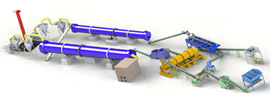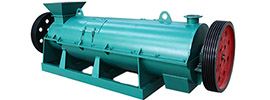Building an organic fertilizer plant requires comprehensive consideration of technical, market, environmental, and financial factors. Below is a detailed roadmap:
I. Pre-Project Research and Planning
- Market Analysis
- Demand Assessment: Investigate local agricultural scale, crop types, organic fertilizer usage habits, and alternatives (e.g., chemical fertilizers) pricing.
- Competitive Landscape: Analyze nearby plants’ capacity, product types, pricing, and identify differentiation strategies (e.g., premium organic fertilizers, crop-specific formulations).
- Policy Support: Check government subsidies for organic agriculture, environmental protection (e.g., tax breaks, equipment grants, low-interest loans).
- Raw Material Evaluation
- Supply Stability: Confirm availability, cost, and transportation distance of key materials (e.g., livestock manure, crop straw, food waste, sewage sludge).
- Quality Control: Test for heavy metals, antibiotic residues, and compliance with standards (e.g., NY/T 525-2021 in China).
- Pre-Treatment Needs: Assess requirements for crushing, dehydration, or impurity removal.
- Site Selection and Layout
- Environmental Compliance: Locate away from residential areas and water sources; reserve land for pollution control facilities.
- Infrastructure: Ensure proximity to raw material sources/markets, stable utilities, and road access.
- Functional Zoning: Plan areas for raw material storage, fermentation, processing, finished product warehousing, and offices.
II. Technology and Process Design
- Production Process Selection
- Aerobic Fermentation: Mainstream method using turners to control temperature, humidity, and oxygen; suitable for manure and straw.
- Anaerobic Digestion: For high-moisture materials (e.g., food waste), requiring biogas treatment systems.
- Rapid Composting: Add microbial agents to shorten fermentation (15–20 days vs. 45 days).
- Deep Processing: Optional granulation, coating, or blending to enhance value.
- Equipment Selection
- Core Machinery: Turners, crushers, screeners, granulators, dryers, packagers.
- Pollution Control: Odor removal (biofilters, scrubbers), wastewater treatment, dust collectors.
- Automation: PLC systems for real-time monitoring of temperature, humidity, and oxygen.
- Technical Partnerships
- Collaborate with research institutes for technology licensing or R&D.
- Import proven production lines to reduce trial costs.
III. Regulatory Approvals and Certifications
- Business Registration
- Register company name and scope (e.g., “organic fertilizer production and sales”).
- Environmental Permits
- Submit an Environmental Impact Assessment (EIA) report for approval.
- Obtain a pollutant discharge permit (if applicable).
- Agricultural Certification
- Provide product testing reports to apply for organic fertilizer registration.
- Additional Licenses
- Safety production permits (if handling hazardous chemicals).
- Fire safety certification.
IV. Financial Planning and Cost Control
- Investment Budget
- Fixed Costs: Land,plant, equipment.
- Working Capital: Raw materials, labor, utilities, logistics (~20–30% of fixed costs).
- Environmental Investment: 15–20% of total budget for odor/wastewater treatment.
- Funding Sources
- Self-financing, bank loans, government grants, equity financing.
- Apply for agricultural industrialization funds or green credit lines.
- Cost Optimization
- Secure long-term raw material contracts with livestock farms.
- Adopt energy-efficient equipment (e.g., solar drying, waste heat recovery).
- Minimize production losses through lean management.
V. Construction and Operations
- Plant Construction
- Steel Structure: Cost-effective and quick for small-scale plants.
- Concrete Structure: Durable for large-scale operations.
- Supporting Facilities: Offices, labs, staff quarters.
- Staffing and Training
- Key roles: Fermentation engineers, QC inspectors, equipment operators.
- Training topics: Safety protocols, process control, environmental compliance.
- Production Management
- Raw Material Mixing: Adjust C/N ratio (25–30:1) for optimal fermentation.
- Process Monitoring: Regularly test temperature, pH, and moisture; adjust parameters as needed.
- Quality Assurance: Batch-test organic matter, NPK content, and heavy metals.
- Sales Strategy
- Channel Development: Partner with agro-input dealers, cooperatives, and large-scale farmers.
- Brand Promotion: Attend trade shows, conduct field trials, offer soil testing services.
- Value-Added Services: Custom formulations, technical guidance.
VI. Risk Mitigation
- Environmental Risks
- Maintain odor control systems to prevent complaints.
- Ensure zero liquid discharge or treated wastewater meets standards.
- Market Risks
- Diversify raw material sources to reduce supply volatility.
- Develop high-margin products (e.g., bio-organic fertilizers, specialty blends).
- Policy Risks
- Monitor updates to organic fertilizer standards (e.g., NY/T 525-2021 revisions).
- Pursue green certifications for future compliance.
Recommendation: Start with a medium/small pilot plant to gain experience before scaling. Join industry associations (e.g., China Agricultural Means of Production Circulation Association) for resources and networking.
 Send us a Email
Send us a Email Wulong Industrial Cluster
Wulong Industrial Cluster Have any question?
Have any question?



















